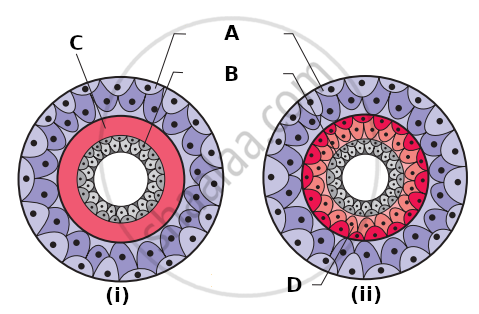Advertisements
Advertisements
Question
Identify the structure that the archenteron becomes in a developing animal.
Solution
The archenteron becomes the cavity of the digestive tract.
RELATED QUESTIONS
If you are given a specimen, what are the steps that you would follow to classify it?
What is the difference between direct and indirect development?
What is the exact difference between grades of organization and symmetry? Explain with examples.
Complete the following chart.
| Body cavity | Germ Layer | Phylum |
| Absent | ______ | Porifera |
| Absent | Triploblastic | ______ |
| Pseudocoelom | ______ | Aschelminthes |
| Present | ______ | Arthropoda |
Draw a neat and labelled diagram.
Jellyfish
The following characteristics are essential for classification.
Species is the ______ unit of classification.
The symmetry exhibited in cnidarians is ______.
Which of the following animals has a true coelom?
Lateral line sense organs occur in ______.
Compare Schizocoelom with enterocoelom.
Observe the animal below and answer the following questions.

- Identify the animal.
- What type of symmetry does this animal exhibit?
- Is this animal Cephalized?
- How many germ layers does this animal have?
- How many openings does this animal’s digestive system have?
- Does this animal have neurons?
What are flame cells?
Which organism is called Friends of farmers? Why?
Examine the figures of diploblastic (i) and triploblastic (ii) organization in animals given below and identify the labelled parts A to D.

Match the following list of animals with their level of organisation.
| Division of Labour | Animal |
| Column I | Column II |
| A. Organ level | i. Pheretima |
| B. Cellular aggregate level | ii. Fasciola |
| C. Tissue level | ii. Spongilla |
| D. Organ system level | iv. Obelia |
Choose the correct match showing division of labour with animal example.
Differentiate between a diploblastic and a triploblastic animal.
Complete the paragraph using proper words:
(Asymmetrical, Paramecium, Equal, imaginary, central, insects, rats, bird, three, unequal)
If body of any animal is cut through ______ axis of body, it may or may not produce two equal halves. Depending upon this property, there are different types of animal bodies. In the case of ______ body, there is no any such imaginary axis of the body through which we can get two equal halves. For example Amoeba, ______ some sponges. In radial symmetry type of body, if imaginary cut passes through central axis but any plane of body, it gives two ______ halves. For example Starfish. In case of this animal, there are five different planes passing through ______ axis of body through which we can get two equal halves. In Bilateral symmetry type of body, there is only one such imaginary axis of body through which we can get two equal halves. For example: ______ fishes, frog, birds, human, etc.
